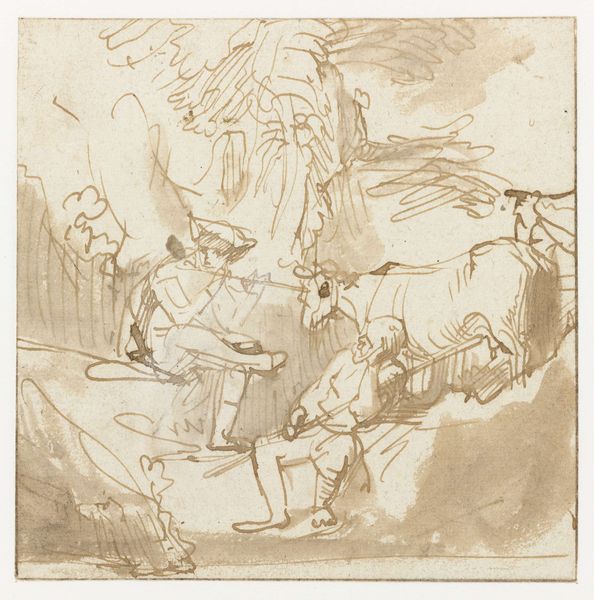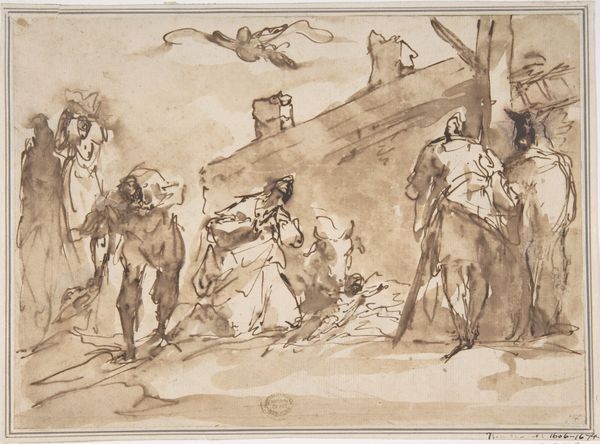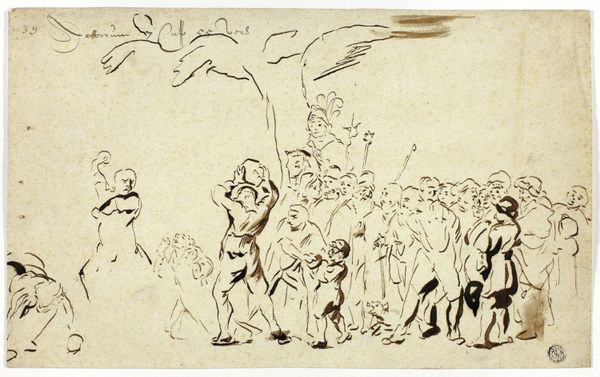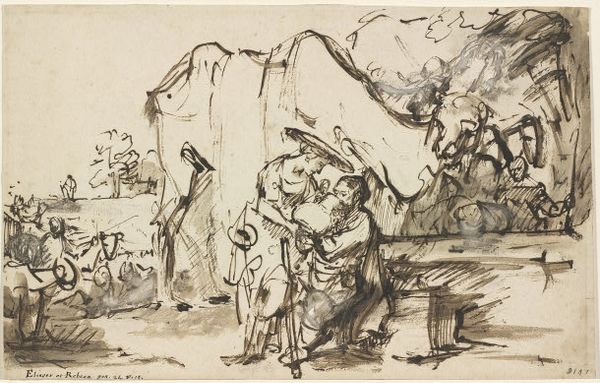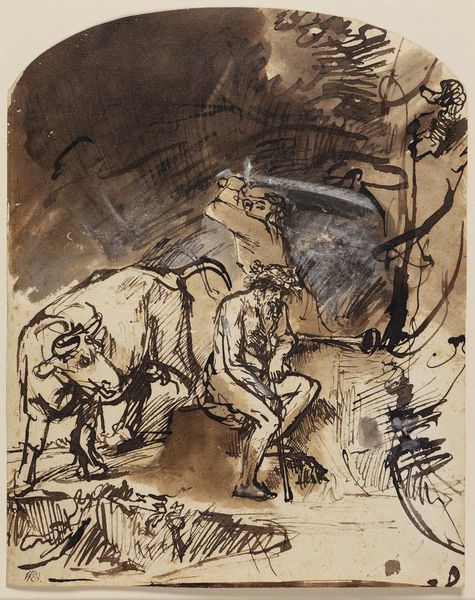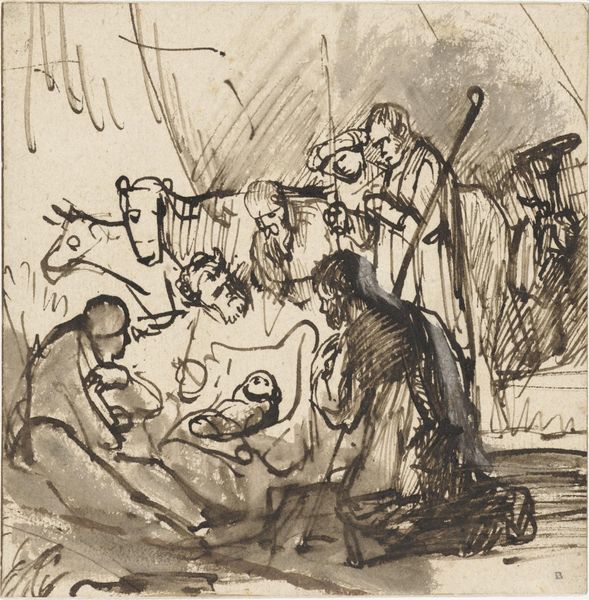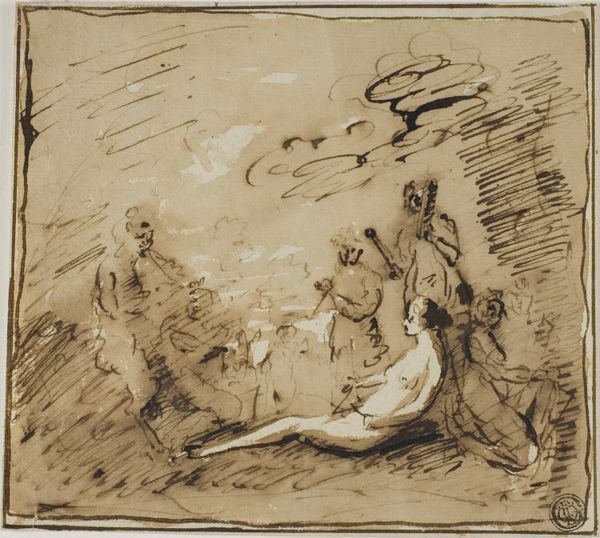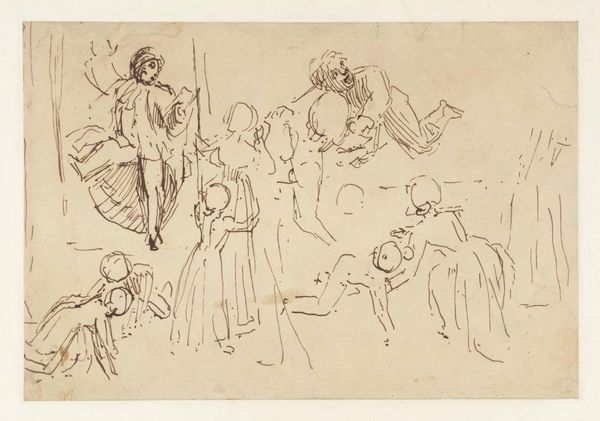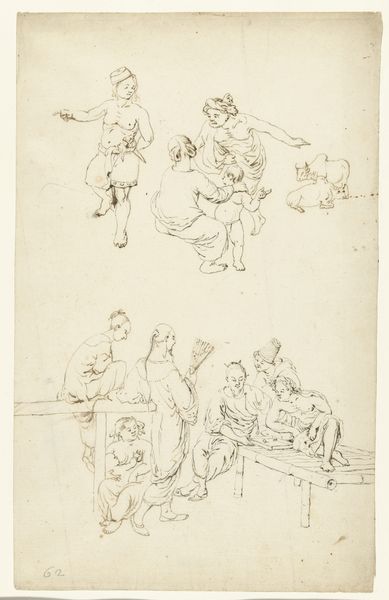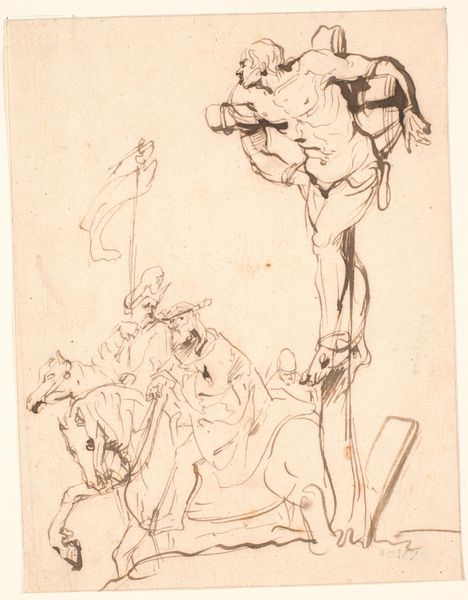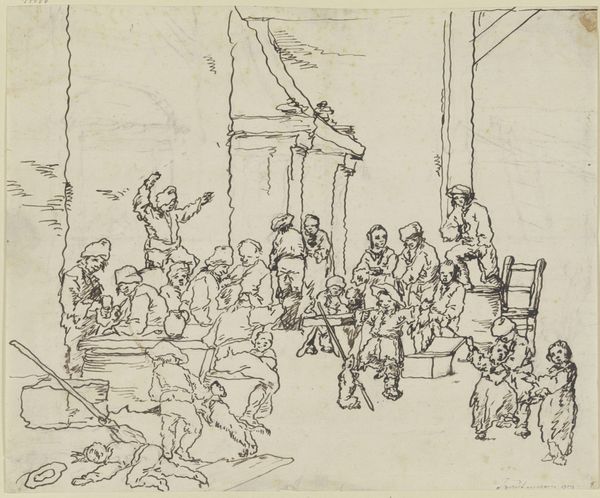
drawing, ink, pen
#
drawing
#
imaginative character sketch
#
quirky sketch
#
narrative-art
#
cartoon sketch
#
figuration
#
personal sketchbook
#
ink
#
sketchwork
#
ink drawing experimentation
#
romanticism
#
pen-ink sketch
#
line
#
sketchbook drawing
#
pen
#
genre-painting
#
storyboard and sketchbook work
#
sketchbook art
Dimensions: height 152 mm, width 148 mm
Copyright: Rijks Museum: Open Domain
Curator: At first glance, this work pulses with chaotic energy. The lines feel impulsive, almost frantic, yet there's an undeniable sense of joy emanating from the central figures. Editor: Indeed. What we're viewing is a pen and ink drawing entitled "Man en vrouw met drie kinderen, dansend in een kring" which translates to "Man and woman with three children dancing in a circle" attributed to Simon Andreas Krausz, likely created between 1770 and 1825. The materials themselves speak to an intimacy, perhaps a sketch from life. Curator: The composition is striking. Notice how the artist uses bold, dark strokes to define the key figures in the circle, immediately drawing your eye to the kinetic rhythm of the dance. Lighter, sketchier lines create a sense of movement and imply other figures, a family perhaps, observing or joining in the revelry. Editor: Viewing it from a historical lens, scenes of family and leisure gained increasing traction during the late 18th and early 19th centuries, mirroring a growing middle class with more time and resources for domestic pursuits. Drawings like this, circulating within social circles, would have reinforced certain idealized notions of family life and social harmony. Curator: It's the contrast between the defined figures and the suggested forms that really captures my attention. The negative space becomes just as important as the positive, creating a dynamic interplay between what is present and what is implied. Look at the almost abstract forms in the upper register – they add an element of mystery, even dreamlike quality. Editor: Absolutely. Consider the role of public entertainment and shifting social mores. Dance, especially within a family context, would have held significance. It symbolized not just leisure but also unity and tradition. These themes become central to both individual and collective identities in this period. Curator: What I find most compelling is how the artist managed to convey so much energy with such minimal means. It feels immediate and heartfelt, avoiding the rigidity often found in more formal portraiture of the time. The very lack of polish is what lends it its charm. Editor: For me, the artwork reflects larger historical currents—social structures and cultural ideals manifest within seemingly simple domestic scenes, shaping both artistic creation and public consumption. Curator: I’ll carry away from this encounter a fresh insight on how a drawing's deliberate looseness can translate emotion so efficiently. Editor: And for me, an appreciation for how intimate art like this allows us access into the historical constructions of family life and communal bonds.
Comments
No comments
Be the first to comment and join the conversation on the ultimate creative platform.
